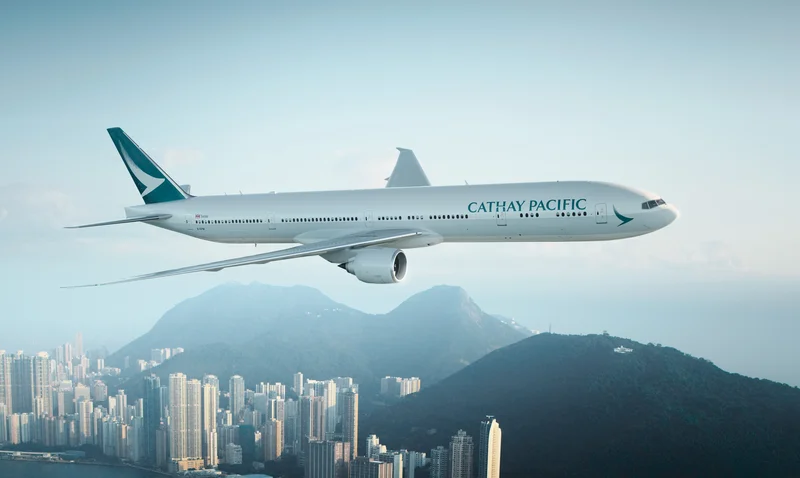Cathay Pacific & Airbus's Sustainable Fuel Initiative: Why This Changes Everything for Air Travel
Forget Greenwashing: Why This Airbus-Cathay Partnership is the Real Blueprint for Saving Aviation
For years, we’ve been stuck in a frustrating loop when it comes to sustainable aviation. We hear the grand announcements, the net-zero pledges for 2050, the talk of a greener future for air travel. And yet, the reality on the ground—or rather, at 35,000 feet—has been stubbornly slow to change. Sustainable Aviation Fuel, or SAF, has been held up as the great savior, the one viable path to decarbonizing long-haul flights. But it’s remained a rounding error, accounting for less than 1% of the world’s jet fuel consumption. It’s been a classic chicken-and-egg stalemate: airlines wouldn’t commit to buying expensive SAF without a reliable supply, and producers wouldn’t build billion-dollar refineries without guaranteed buyers.
Then, a few days ago, something quietly shifted. The announcement that Airbus and Cathay form co-investment partnership for scaling sustainable aviation fuel adoption might look like just another corporate press release. But I’m telling you, it’s not. When I first read the details, I honestly just sat back in my chair and smiled. This is the kind of breakthrough that reminds me why I got into this field in the first place.
This isn't about an airline simply buying fuel. This is about a manufacturer and an operator linking arms, reaching across the value chain, and deciding to build the future themselves. It’s a fundamental change in the DNA of industrial problem-solving, and it might just be the blueprint we’ve been desperately waiting for.
From Silos to Systems
To understand why this is such a big deal, you have to appreciate how broken the old model was. For decades, the aviation industry has operated in clean, distinct silos. Airbus builds the planes. Cathay flies the planes. An energy company, somewhere else entirely, supplies the fuel. This separation of duties works fine in a stable, predictable world. But when you face an existential challenge like decarbonization, those silos become prison walls. The problem is systemic, but the players have been acting individually.
This partnership blows those walls up. Airbus isn’t just selling Cathay A350s anymore; it’s co-investing in the very fuel those planes will need to fly sustainably for the next thirty years. Cathay isn’t just a customer; it’s becoming a co-owner of its own clean energy pipeline. Think of it this way: SAF is essentially a high-tech fuel made from renewable sources like used cooking oil, agricultural waste, or even captured carbon dioxide—in simpler terms, it’s about turning our waste streams into a clean power source for jets. It's the ultimate act of industrial recycling. But making it at scale is complex and expensive. By pooling their capital and expertise, Airbus and Cathay are de-risking the entire venture for fuel producers. They’re providing the seed capital and, more importantly, the guaranteed demand that gets steel in the ground.

What does this really mean? It means the conversation shifts from "Who's going to pay for this?" to "How fast can we build this together?" This is a paradigm shift we haven't seen in a legacy industry for a very long time.
The Network Effect of Innovation
This isn’t just about one project or one region. This is about creating a model that can be replicated, scaled, and improved upon across the globe. The decision to focus on the Asia-Pacific region is strategically brilliant. It’s where aviation is set to see the most explosive growth in the coming decades, meaning it's where the emissions battle will be won or lost. By planting the flag there, Airbus and Cathay are building the infrastructure of tomorrow where it will be needed most—it's like building the internet's fiber-optic backbone in the 1990s not just in Silicon Valley, but simultaneously in the world's emerging economic powerhouses.
Imagine what happens when another airline and another manufacturer see this working. The model creates a powerful incentive for others to join in, creating a network effect of investment that could finally tip the scales for SAF production—and the speed of this is just staggering when you think about it, it means the gap between today’s 1% and a meaningful 10% or 20% could close far faster than any of the old, linear projections ever predicted.
Of course, with this power comes immense responsibility. As we champion these new fuel pathways, we have to remain vigilant. We must ensure that the feedstocks used are genuinely sustainable, that they don’t compete with food production or lead to deforestation. The goal is to solve a problem, not create a new one. But the collaborative framework of this partnership, which includes joint policy advocacy, is a promising sign that they’re thinking about the entire ecosystem, not just the fuel itself.
This partnership is more than just money. It’s a vote of confidence in the future. It’s a statement that the key players in aviation are done waiting for someone else to solve their biggest problem. They’re rolling up their sleeves and building the solution themselves.
We're No Longer Waiting for the Future
Let’s be clear. This $70 million isn't going to decarbonize the entire aviation industry overnight. But that's not the point. Its true value is symbolic. It proves that the old excuses are dead. The stalemate is broken. This collaboration is the first crack in the dam, and it shows every other airline, manufacturer, and investor the path forward. It’s a blueprint for turning passive hope into active creation. They aren't just funding a project; they are funding a new way of thinking. And that is far more powerful than any amount of money.
Tags: cathay pacific
Lam Research's Next Breakthrough: What the Forecast Says and How It Stacks Up Against NVDA & ASML
Next PostAnthropic's Next Leap: The 'AI Campus' Breakthrough and What It Means for Tomorrow
Related Articles
